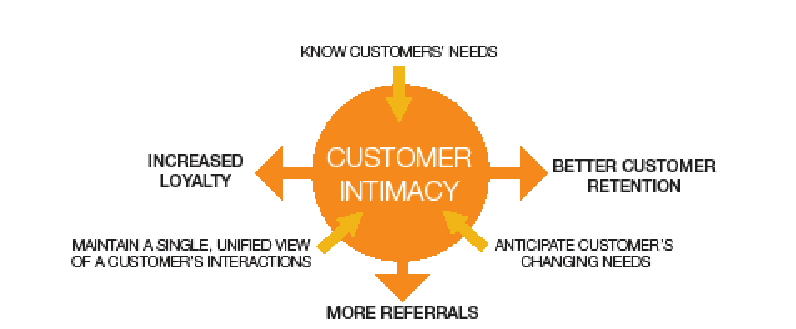Business Management | Hearing Review Products Winter 2013
Why Everyone on Your Staff Is a Salesperson (Or Why They Should Be)
Customer intimacy is at the heart of selling—and critical for patient motivation and buy-in
By Sam Rotella, MA
We need to sell to serve our patients. Has a nice ring to it.
But every day, the challenge of selling hearing instruments grows under the pressures of a turbulent economy and strengthening competition. This is a struggle that no hearing practice owner/manager must face alone. It should be recognized immediately that we are in a profession in which the first order of care is to serve the patient. But there also needs to be staff-wide recognition and buy-in that, in order to serve the patient, the practice’s doors must stay open.
When every customer-facing member of your staff fully understands their role in the selling process and does their best to perform it, they become a valuable ally in your mission to drive growth and to provide the high-quality services your patients need.
Start with Why
Why does Starbucks® do well year after year—despite selling overpriced coffee? Why has Southwest Airlines® been the only profitable airline for the last two decades? The reason is that these companies create a customer experience that is passionately delivered by a committed, well-trained workforce.
Since about 2009, we have seen a shift in the consumer’s approach to buying. Previously, the features and benefits sales pitch reigned. But we have entered an era where consumers are now making choices based more on how they “feel” about products and their sellers.
This customer experience—a “feeling” or “emotional experience”—is extremely important. Companies can be very good at presenting their business case to potential customers. But increasingly, consumers are buying through their emotions, the feelings that they have about a product, the entity presenting it to them, and the way that it is presented to them. Sellers have to work hard and thoughtfully to present or portray this emotional case to the consumer.
To motivate and train your employees in their important role in the sales process, you must regularly communicate who, what, when, where, and how they are supposed to sell. But the question you must answer first when motivating your staff is why they should do it and why the customer should buy.
The “What” is rational and appeals to the cognitive brain. The “Why” is emotional and appeals to the limbic area of the brain that controls our emotions. The “How” is also rational and cognitive.
“Why” speaks to our beliefs. “How” is the actions we take. “What” is the results of those actions. Everything a person says or does has to prove what he or she believes.
Moreover, few people can articulate why they do what they do. In other words, they operate from the outside in. Who is inspired by What? Or even How? Patients do not buy what is done; they buy why it is done.
Tell Your Story
In motivating and training your employees, tell them your “story.” What inspired you to start the practice? Surely, financial reward was a part of the reason, but you must have also been motivated by a desire to make a difference to people who could not hear well, to improve their quality of life.
Use emotion in telling your story. Never forget your roots. Demonstrate; don’t lecture. Be sincere in conveying your main purpose: to help patients hear better again, reconnect with friends and loved ones, and live more independently for longer.
Employees need to be a part of this service mission. Tell them that when they sell, they should sell value—yes, this includes the benefits and features of your products. But more important is how these features will improve the patient’s quality of life and how good they will make patients and those around them feel.
customer intimacy = success Story

|
| Figure 1. The elements and rewards of customer intimacy. Adapted from LeadFormix |
Many examples exist of companies that sell values, benefits, and experiences. The following companies have carefully honed their marketing image around what some marketers now call customer intimacy (Figure 1):
- Simply get passengers to their destinations on time, at the lowest possible cost, and have fun while doing it…Southwest
- We bring inspiration and innovation to every athlete in the world…Nike
- We are the feel-good drink for all generations…Coca Cola
- Quality products at the best prices…Costco
- We shop the world for you…Trader Joe’s
- A PC in every home on every desk…Microsoft
- Deliver “WOW” through service…Zappos
Starbucks: Life happens over coffee
Starbucks is the poster child for the emotional sell. With its motto “Life Happens Over Coffee,” it aims to create an uplifting experience in customer intimacy. The company seeks to create an “ambience” based on the human spirit, sense of community, and need for people to come together. Starbucks creates an “experience” around the consumption of coffee, an experience that people will weave into their lives.
Why drives trust because it is not perceived to be manipulative. A true why is driven by things other than one’s own self-gain. And with trust comes the perception of value.
Make It about the Buyer
American Hearing Aid Associates (AHAA) advocates that the goal of selling is to create a lasting relationship with the patient. Buyers are self-centered, thinking about what the product will do for them. Your employees will have to understand patients’ priorities. Good salespeople tailor a product’s features and benefits to each individual buyer. They always have the why in mind. Why is this product good for the patient? Why is it going to improve quality of life?
Control what you can control. Today, we can’t just sell; we have to inspire people to act. In discussing the why, your selling staff can use inspiration and emotion and focus on the long-term benefits of hearing better.
Some manipulation may creep in such as price discounts and endorsements of satisfied hearing aid users, including celebrities. But emphasize to your staff that we and our patients share the same needs: the need to belong, the need to control, the need to have our self-worth enhanced, the need for recognition, and the need to feel that we made the right financial decision.
And a last point: Do away with “one night stands.” That is, reach out again to patients who turned down your first offering. Call them within 24 hours to find out why they did not buy. Keep following up with them at future intervals. Persistence and a display of sincere interest can often produce a sale later.
The BFF Syndrome
So, in the selling process, the staff member needs to become the patient’s BFF: you want to “tell” them, you need to “tell” them, and you’re going to “tell” them!
The ingredients for endearing themselves to a patient is to convey quantified value that describes specific benefits. Your staff should take opportunities to explain how your product or service solves or improves the patient’s situation. Show relevancy to the patient. The conversation has to be uniquely differentiating, that is, why you, dear patient, are going to be helped.
Listening
In selling, your staff needs to ask questions to deepen the understanding of the patient’s needs and desires. Good questions can reveal the patient from the patient’s perspective. They will broaden the perspectives of the patient and expand ideas and possibilities for you both.
Moreover, there is magic in the first word of a question. Magical first words can elicit responses that will be ever more helpful in determining your patient’s needs and the progress you are making toward meeting those needs. Magical first words include “Describe for me,” “Share with me,” “Tell me.”
Emphasize that listening to the patient’s answers is not just understanding the words of the questions asked. Listening is understanding why the question was asked in the first place. Every question should have a purpose; it should be a step forward in selling your products and services while motivating the patient.
accountability for you and your staff
You have many challenges in motivating your staff to sell properly. They have a right to fulfillment. They should demand that you, the owner/manager, tell them why the practice exists and what “cause” they are working to help the practice achieve.
Tell your staff what the practice’s mission/vision is, the strategies and tactics that will be employed to achieve the mission, the competency they need to contribute, and your expectations of their results. Likewise, give them incentives to be successful, and let them know that you will be monitoring and evaluating their performance continually.
Thus prepared, they must be held accountable then, for what is expected of them, their beliefs, their actions, and their results.
When people are financially invested, they want a return. When persons are emotionally invested, they want to contribute.
Summary
When it comes to serving your patients, your employees need to sell values, benefits, and experiences—like the Starbucks and Zappos of the world.
Engage and energize your staff and get them to rally around, making your practice the best in your market. Work on ensuring that everyone in the practice can articulate a value, a why proposition. Brainstorm with them on how you all can better serve your patients and outperform the competition. Set market share and growth goals together with your staff, and keep score in a very visible way.
Training and motivating staff is a continual process. They will appreciate it, for to be prepared inspires confidence. The results should show in your patients’ better hearing health and in their referrals!
Reference
1. LeadFormix. Does marketing automation hurt or help customer intimacy? Available here.





